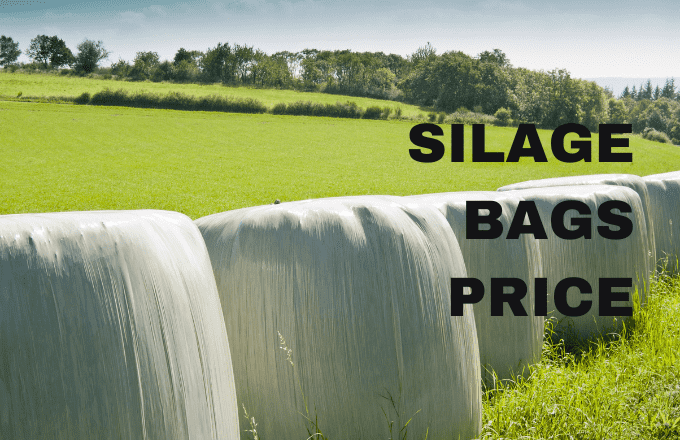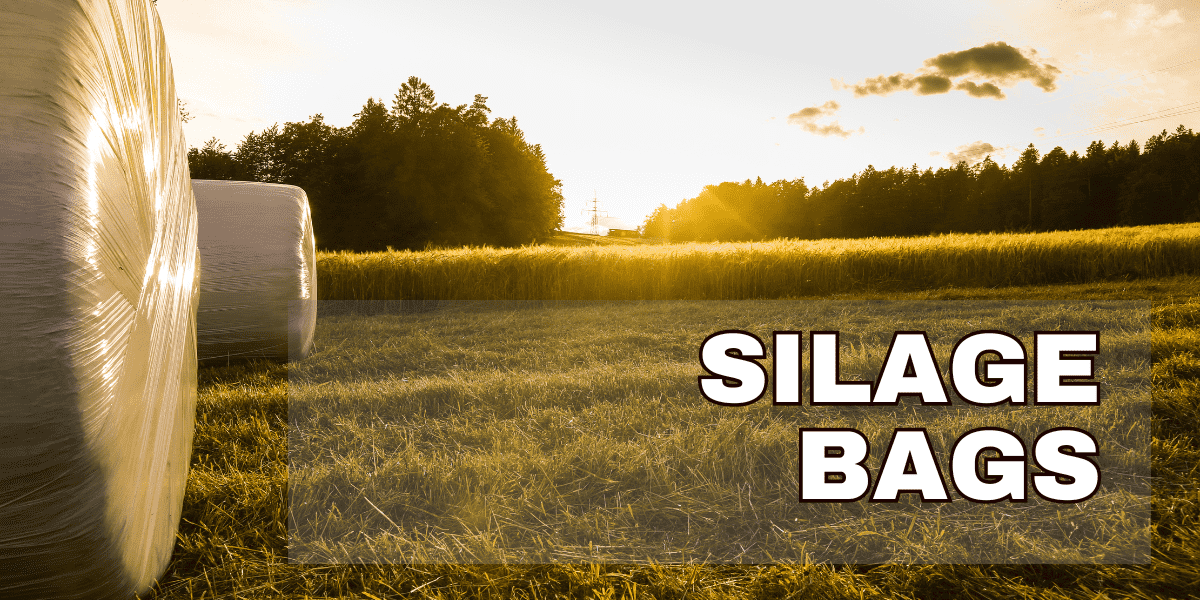Silage bags, often referred to as bunker covers or pile covers, play an indispensable role in the world of farming. These durable bags, made of specially designed plastic, ensure that silage remains fresh and nutritious for livestock.
Table of Contents
A Brief History of Silage Bags
Over the past few decades, the methods for storing silage have evolved. Initially, farmers relied on silos or pits. However, with the advent of silage bags, storage became more efficient, cost-effective, and versatile.

Materials Used in Silage Bags
While they might seem ordinary, the materials used in these bags are anything but. UV-resistant polyethylene ensures longevity and protection against the elements, guaranteeing fresh silage for extended periods.
Ag Bags: The Basics
Ag bags, a sibling to Silo bags, offer similar advantages but have distinct differences that set them apart.
Differences Between Ag Bags and Silo Bags
While both are pivotal in agriculture, ag bags typically have a larger volume. They are used for broader applications, including grain storage.
Benefits of Using Ag Bags
Their versatility extends beyond silage. From grain storage to even covering farm equipment, ag bags provide an airtight environment, reducing spoilage risks.
Silo Bags for Sale: A Buyer’s Guide
Whether you’re a newbie or a seasoned buyer, navigating the world of Silo bags can be daunting. Let’s simplify the process for you.
Top Brands in the Market
From Agriseal to Silostop, understanding top brands can ensure you get the best bang for your buck.
Factors to Consider While Purchasing
From size to material quality, we delve into the intricacies of what makes a silage bag worth the investment.
Farmers, looking for a smart way to store your feed? Silage bags are the answer! They keep your feed fresh, don’t tear easily, and are resistant to sun damage. Plus, they save you space and money since you won’t need big storage buildings. You can place them anywhere, and they’re easy to move around. With these bags, you’ll waste less feed and save more money.
KEY FEATURES:
- Keeps feed fresh and tasty
- Sun damage resistant
- Tough and won’t tear easily
- It saves a lot of space.
- Much cheaper than big storage options
- Works on any ground
- You don’t need a shed or barn.
- Easy to carry and move
- Less feed goes bad.
- There are fewer chances of feed getting spoiled.
Small Silage Bags: Pros and Cons
While large Silo bags have their place, small silage bags offer unique advantages and challenges.
Ideal Use Cases for Small Silo Bags
Perfect for smaller farms or specific storage needs, small bags are versatile and efficient.
Storing Tips for Fermentation bags
Ensure longevity and maintain the quality of your hay with these golden storage rules.
Locating Silage Bags for Sale Near Me
Finding the right supplier can make all the difference. Let’s explore where to begin your search.
Online Platforms to Explore
From e-commerce giants to specialized agricultural websites, discover where you can find the best deals.
Checking Local Dealerships
Sometimes, the old-fashioned way proves best. Local dealerships can offer personalized advice and competitive pricing.
Hey there! At Agricomplex, we have super food for animals. We’ve got tasty corn silage and awesome oats silage. Need some corn silage bales? We’ve got that too! It’s like the yummiest treat for cows and other animals. Come check it out!
Ag Bags for Sale: What to Look For
Just like with Grain bags, factors such as quality, brand reputation, and size are important.
Popular Ag Bag Types and Their Uses
Not all ag bags are made equal. Discover which type suits your needs best.
Price Range and Affordability
Budgeting is key. Understand the market dynamics and ensure you’re getting value for your money.





The Nitty-Gritty on 5 ft Silage Bags
While seemingly standard, 5-foot silage bags offer unique storage solutions.
Storage Capacity and Durability
Despite their size, these bags pack a punch in terms of storage capacity and resilience.
Tips for Proper Usage
Maximize your bag’s lifespan with these crucial usage tips.
Understanding Silage Bags Price Factors
Why do prices fluctuate? Let’s dissect the factors at play.
Production Costs and Brand Reputation
Raw material costs, brand reputation, and additional features all play into the final price tag.
Bargain Hunting: Getting Value for Money
Snag the best deals without compromising on quality with these savvy shopping tips.
Silo Bags for Sale: Things to Note
Silo bags, often confused with Grain bags, serve distinct purposes in agriculture.
Distinguishing Between Silo Bags and Grain bags
While they may look similar, their uses and structures vary. Let’s break down the differences.
Top Silo Bag Manufacturers
Trustworthy brands can make all the difference. Discover the industry leaders in silo bag production.
Conclusion
Whether you’re diving into the world of farming or are a seasoned agriculturalist, understanding the nuances of silage bags, ag bags, and their siblings can elevate your storage game. With numerous options, sizes, and brands available, making an informed choice can ensure your silage remains fresh, nutritious, and ready for consumption.
Frequently Asked Questions (FAQ’s)
What’s the average lifespan of a silage bag?
Depending on exposure to the elements and the quality of the bag, most silage bags last 12-18 months.
How do ag bags differ from silage bags in terms of material?
Both bags typically use UV-resistant polyethylene. However, ag bags might have thicker walls for more extensive applications.
Are small Fermentation bags suitable for personal use?
Absolutely! They’re perfect for personal farms or small-scale storage needs.
Is there a significant price difference between top-brand silage bags and lesser-known brands?
While top brands might have a premium, their quality, durability, and warranty often justify the cost.
Can 5-foot silage bags store grains as well?
Yes, though, it’s essential to ensure the grain’s moisture content is suitable for storage.
Why might one choose a silo bag over a silage bag?
Silo bags are generally larger and more suited for storing grains on a more extensive scale.







